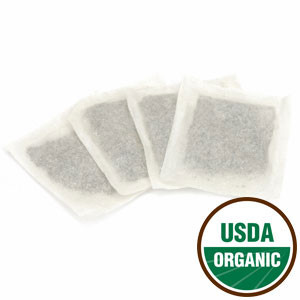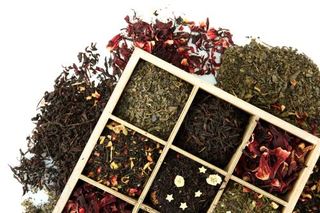Chamomile Tea
Table of Contents
NEWS: This superfood is now available in the SANEStore as a convenient whole-food powder so you can more easily enjoy it in smoothies and recipes.

Chamomile Tea originates from the Nile River Valley of Egypt. Considered a remedy for all ills by the ancient Egyptians, this golden herb remains a modern favorite to promote calm and relieve anxiety. When steeped, these fragrant blossoms smell of freshly cut apples and produce a rich, golden cup with superior flavor. This caffeine free herbal infusion is delicious served with honey or agave nectar.
Why Try Chamomile Tea?
Health benefits and uses of chamomile extract
List of health benefits of Chamomile Extract:
Antioxidant properties:
It has been known to contain antioxidant activity of chamazulene responsible for the anti-inflammatory and analgesic activities.
Studies of various extracts prepared from different parts of plant have also shown high antioxidant activity which may be due to polyphenolic compounds present in it.
It is likely to act as a free radical scavenger because it possesses considerable amount of phenolic components along with other flavonoids like apigenin, patuletin etc.
Antioxidants are used in the treatment of oxidative stress related disorders.
Oxidative stress is caused by excess production or reduced detoxification or reduced degradation process in the body that results into accumulation of free radicals in the body that causes damage to cells and tissues.
Chamomile extract is used in the treatment of various oxidative stress related diseases like atherosclerosis, rheumatoid arthritis, inflammatory skin disorders etc.
Anti-inflammatory activity:
It has analgesic and anti-inflammatory activities due to its chamazulene content which reduces capillary permeability and inhibits prostaglandin biosynthesis resulting into decreased inflammation.
This compound also reduces leukocyte adhesion and migration at sites of acute inflammation.
Analgesic properties:
Presence of flavonoids such as apigenin can give it strong antispasmodic effect without affecting central nervous system involved in pain perception . This analgesic property of chamomile extract is due to the inhibition of prostaglandins biosynthesis.
Antispasmodic activity:
It has antispasmodic activity which helps in relieving spasms caused by smooth muscles like gastrointestinal, biliary and respiratory tracts.
This effect is mediated through its flavonoids content which acts on calcium channels to alleviate muscle contractions.
It is also used for relieving abdominal cramps, colic pain and flatulence.
Dental uses:
Chamomile extract possesses anti-inflammatory properties that inhibit inflammatory response by inhibiting production of inflammatory mediators like prostaglandin etc., thus it can be used as an adjunct therapy with scaling and root planing in the management of chronic periodontitis.
Anti-ulcer activity:
It has gastroprotective activity due to its anti-inflammatory and antioxidant properties which inhibit mucosal damage caused by NSAIDs (non steroidal anti inflammatory drugs).
It can be used as an alternative for treating gastrointestinal ulcers associated with non steroidal anti inflammatory drugs. It also reduces gastric acid secretion and also prevents aspirin induced gastric mucosal injury.
Anticancer activity:
Chamomile extract is used in the treatment of various cancers like leukemia, lymphoma and myeloma due to its anticancer property which is thought to be due to cytotoxic effects on that may result from impairment of DNA synthesis and cell replication.
Some studies of various extracts prepared from different parts of plant have also shown anticancer activity which may be due to apigenin flavonoids present in it.
Chamomile extract is used as an adjunct therapy with chemotherapy drugs like doxorubicin, vincristine and etoposide for the treatment of leukemia.
Antimicrobial activity:
It has antimicrobial property due to its antioxidant content that can help in healing infections caused by bacteria , fungus and virus .
It is also used in treatment of septic wounds because of its wound healing activity due to its anti-inflammatory, analgesic and antibacterial properties.
Chamazulene present in it possesses antimicrobial effects which inhibit growth of bacteria like Staphylococcus aureus, Bacillus subtilis etc.
References
1. Rodríguez Lion, M.L et al. Industria Farmacéutica Septiembre/Octubre 1998,87-91
2. Ramos, M.F.S et al. Int J Cosmet Sci 1996 18,87-101
3. Malpede, A. Erboristeria Domani 1996 191 (3), 82-89
4. Wagner, H.; Bladt, S. Plant Drug Analysis 2ª ed. 1996 Springer-Verlag Berlin
5. Carle, R.; Gomaa, K. 1992. Drugs of Today, 28, nº8, 559-565
6. Marti, M.E. DCI, February 1992, 36-46
7. Patri G, Silano V. Plant preparations used as ingredients of cosmetic products. Strasbourg: Council of Europe, 1989; 186-187
8. Achterrath, U et al. Planta Med. 1980, 39, 38-50
9. Jakovlev, V. et al. Planta Med. 1979, 35, 125-140
10. Szelenyi, I et al. Planta Med. 1979, 35, 218-227
11. Issac, O. Planta Med. 1979, 35, 118-124
12. ABDA (ed.). 1982. Pharmazeutische Stoffliste, 4th ed., with supplements. Frankfurt am Main: Arzneibüro der ABDA
13. Aertgeerts, P. et al. 1985. [Comparative testing of Kamillosan cream and steroidal (0.25% hydrocortisone, 0.75% fluocortin butyl ester) and non-steroidal (5% bufexamac) dermatologic agents in maintenance therapy of eczematous diseases] [In German]. Z Hautkr 60(3):270–277
14. Bradley, P.R. (ed.). 1992. British Herbal Compendium, Vol. 1. Bournemouth: British Herbal Medicine Association
15. Braun, R. et al. 1997. Standardzulassungen für Fertigarzneimittel—Text and Kommentar. Stuttgart: Deutscher Apotheker Verlag
16. British Herbal Pharmacopoeia (BHP). 1996. Exeter, U.K.: British Herbal Medicine Association.
17. Bruneton, J. 1995. Pharmacognosy, Phytochemistry, Medicinal Plants. Paris: Lavoisier Publishing
18. Bundesanzeiger (BAnz). 1998. Monographien der Kommission E (Zulassungs- und Aufbereitungskommission am BGA für den humanmed. Bereich, phytotherapeutische Therapierichtung und Stoffgruppe). Köln: Bundesgesundheitsamt (BGA)
19. de la Motte, S., S. Bose-O’Reilly, M. Heinisch, F. Harrison. 1997. Doppelblind-vergleich zwischen einem apfelpektin/kamillenextrakt-präparat und plazebo bei kindern mit diarrhoe [Double-blind comparison of an apple pectin-chamomile extract preparation with placebo in children with diarrhea]. Arzneimforsch 47(11):1247
20. Deutsches Arzneibuch, 10th ed. (DAB 10). 1991. (With subsequent supplements through 1996.) Stuttgart: Deutscher Apotheker Verlag
21. ESCOP. 1997. “Matricariae flos.” Monographs on the Medicinal Uses of Plant Drugs . Exeter, U.K.: European Scientific Cooperative on Phytotherapy
22. Europäisches Arzneibuch, 3rd ed. (Ph.Eur.3). 1997. Stuttgart: Deutscher Apotheker Verlag. 1161–1162
23. Felter, H.W. and J.U. Lloyd. 1983. King’s American Dispensatory, 18th ed., 3rd rev. Portland, OR: Eclectic Medical Publications [reprint of 1898 original]. 1246–1247
24. Foster, S. 1990. Chamomile. Botanical Booklet Series, No. 307. Austin: American Botanical Council
25. Glowania, H.J., C. Raulin, M. Swoboda. 1987. [Effect of chamomile on wound healing—a clinical double-blind study] [In German]. Z Hautkr 62(17):1262, 1267–1271
26. The Homeopathic Pharmacopoeia of the United States (HPUS). 1992. Arlington, VA: Pharmacopoeia Convention of the American Institute of Homeopathy
27. Iwu, M.M. 1990. Handbook of African Medicinal Plants. Boca Raton: CRC Press. 203–204
28. Karnick, C.R. 1994. Pharmacopoeial Standards of Herbal Plants. Delhi: Sri Satguru Publications. 251–252
29. Lange, D. and U. Schippmann. 1997. Trade Survey of Medicinal Plants in Germany—A Contribution to International Plant Species Conservation. Bonn: Bundesamt für Naturschutz. 29–35
30. Leung, A.Y. and S. Foster. 1996. Encyclopedia of Common Natural Ingredients Used in Food, Drugs, and Cosmetics, 2nd ed. New York: John Wiley & Sons, Inc.
31. Mann, C. and E.J. Staba. 1986. In: Craker, L.E. and J.E. Simon (eds.). Herbs, Spices, and Medicinal Plants—Recent Advances in Botany, Horticulture, and Pharmacology. Phoenix: Oryx Press. 235–280
32. Merfort, I., J. Heilmann, U. Hagedorn-Leweke, B.C. Lippold. 1994. In vivo skin penetration studies of camomile flavones. Pharmazie 49(7):509–511
33. Meyer-Buchtela, E. 1999. Tee-Rezepturen—Ein Handbuch für Apotheker und Ärzte. Stuttgart: Deutscher Apotheker Verlag
34. Molochko, V.A., T.M. Lastochkina, I.A. Krylov, K.A. Brangulis. 1990. [The antistaphylococcal properties of plant extracts in relation to their prospective use as therapeutic and prophylactic formulations for the skin] [In Russian]. Vestn Dermatol Venerol (8):54–56
35. Nadkarni, K.M. 1976. Indian Materia Medica. Bombay: Popular Prakashan. 772–773
36. Newall, C.A., L.A. Anderson, J.D. Phillipson. 1996. Herbal Medicines: A Guide for Health-Care Professionals. London: The Pharmaceutical Press
37. Pharmacopée Française Xe Édition (Ph.Fr.X.). 1983–1990. Moulins-les-Metz: Maisonneuve S.A.
38. Reynolds, J.E.F. (ed.). 1989. Martindale: The Extra Pharmacopoeia, 29th ed. London: The Pharmaceutical Press
39. Salaman, I. 1992. Chamomile: A Medicinal Plant. Herb Spice Med Plant Digest 10(1):1–4
40. Schilcher, H. 1997. Phytotherapy in Paediatrics: Handbook for Physicians and Pharmacists. Stuttgart: Medpharm Scientific Publishers. 19–26, 123–124, 157–158
41. Szabo-Szalontai, M. and G. Verzar-Petri. 1977. The antibacterial effect of chamomile oil and its isolated compounds. May Parfumerie und Kosmetik
42. Viola, H. et al. 1995. Apigenin, a component of Matricaria recutita flowers, is a central benzodiazepine receptors-ligand with anxiolytic effects. Planta Med 61(3):213–216
43. http://www.naturalnews.com/042651_chamomile_essential_oils_aromatherapy.html
44. http://www.essentialoils.co.za/essential-oils/chamomile.htm
45. http://www.naturalnews.com/034454_chamomile_anxiety_depression.html
46. Wichtl, M. and N.G. Bisset (eds.). 1994. Herbal Drugs and Phytopharmaceuticals. Stuttgart: Medpharm Scientific Publishers.









